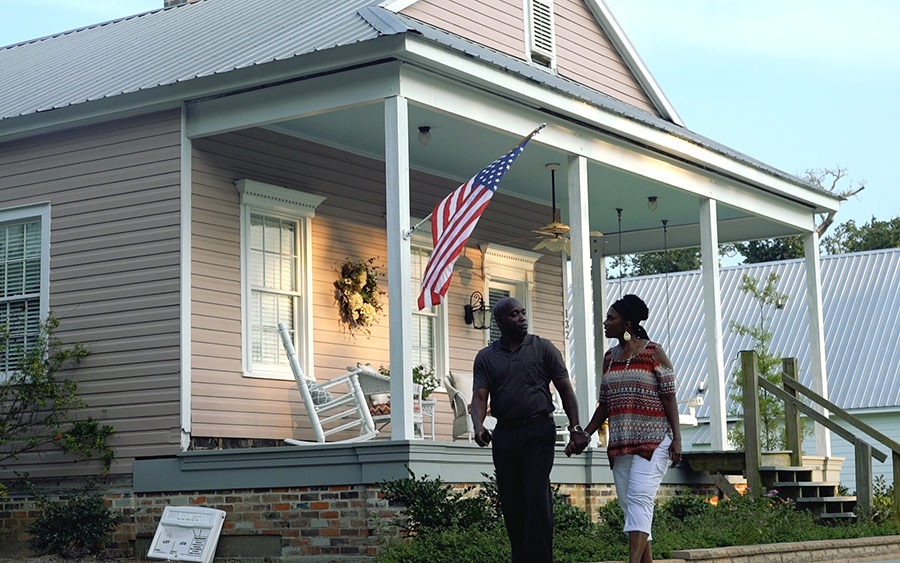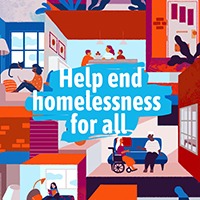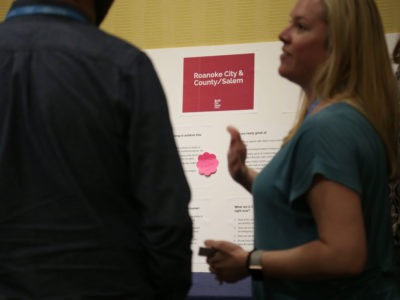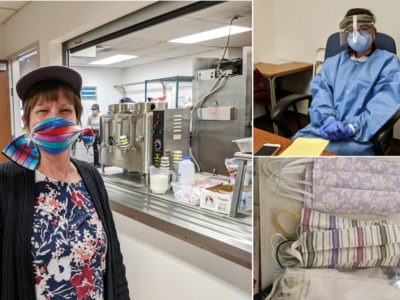When veterans fall into homelessness in Gulfport, Mississippi, they’re housed within 30 days.
It wasn’t always like this. Mary Simons, who has been working on homelessness for 20 years, said that until recently, no one could say how long it took from identifying a newly homeless veteran to housing him or her— no one was keeping track.
Today they’re keeping track. Now organizations across the whole Gulf Coast region work together to make sure they know each person who falls into homelessness, by name. They learn the challenges that person is facing and find ways to get them into permanent housing quickly.
This is what it looks like when cities develop systems to end homelessness, rather than just manage it. Veterans will still experience a housing crisis in Gulfport, but now the city has a system to resolve these crises quickly and effectively.
“It took changing our system to end veteran homelessness,” Simons said.
Gulfport is one of 10 U.S. cities that’s measurably and sustainably ended veteran homelessness as part of the Built for Zero movement.
Homelessness is not just solvable — it is now being solved by cities and counties every day. More than 80 communities are a part of the Built for Zero movement, dedicated to measurably ending homelessness, beginning with veteran or chronic homelessness. They’re creating local systems that ensure homelessness is rare, brief and nonrecurring.
A proven, data-driven approach to ending homelesness
Historically, an understanding of the issue of homelessness has been grounded in an annual estimate of people experiencing homelessness, conducted one night a year in January.
But homelessness is a dynamic, person-specific problem that changes from night to night and from person to person. Taking data collected on one night and using it to inform decisions for the next year just doesn’t work.
“No community can end homelessness of any kind without comprehensive, real-time, person-specific data on the problem,” said Jake Maguire, co-director of Built for Zero. “This has emerged as a gospel tenet of our work.”
The team leading Built for Zero learned this firsthand, through their years of working with communities to end homelessness. While past campaigns were successful at housing a lot of people – more than 100,000 in four years – these efforts were not adding up to communities ending homelessness.
“We realized that in order to end homelessness, we couldn’t count up to a target housing placement. We had to count down to zero homelessness,” said Beth Sandor, co-director of Built for Zero.
From these insights, the Built for Zero movement was created. Real-time, quality data of who’s experiencing homelessness is the cornerstone of the movement.
“Having up-to-date, reliable data on a community’s homeless population is critical to ending homelessness,” said Aras Jizan, Data Solutions Manager at Built for Zero. “You can’t end homelessness without having the data to track progress toward that goal and make sure you’ve reached it.”
Instead of relying on annual data, Built for Zero communities create systems that can track, in real time, who’s experiencing homelessness by name and then use this information to effectively deploy their resources. With this data, communities can know everyone experiencing homelessness by name, triage an individual’s needs and test changes that will move people out of homelessness faster.
To date, 73 communities are working from real-time lists of individuals experiencing homelessness.
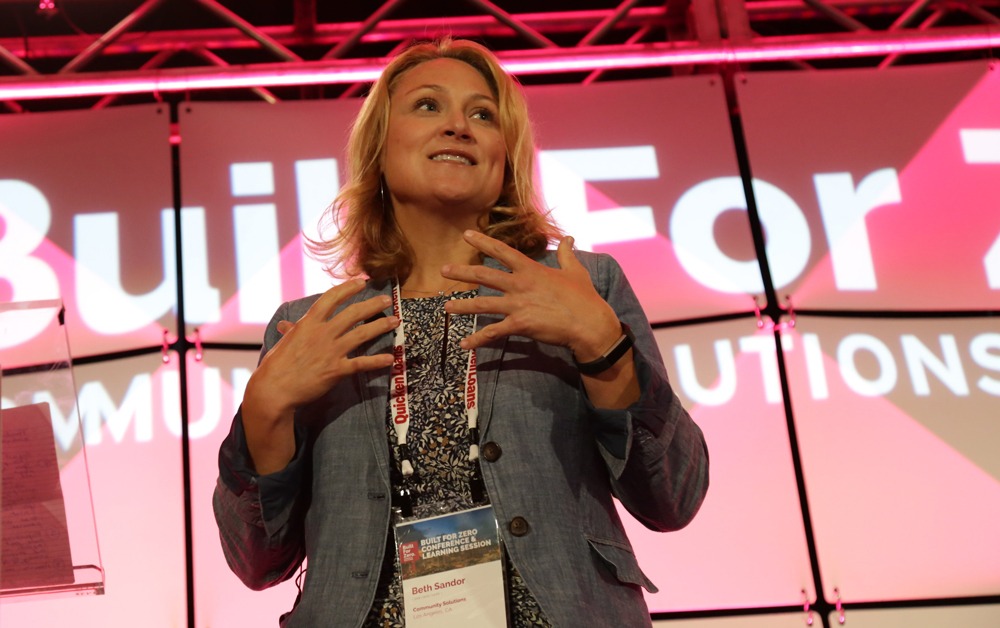
“Our goal is to fundamentally shift the way communities are working. I really believe that’s the thing that’s going to end homelessness.”
—Beth Sandor, co-director of Built for Zero
Solving Homelessness Across The Country
The new normal that was created for veteran homelessness in Gulfport, Mississippi is being built in many more places across the country. From Jacksonville, Florida to Phoenix, Arizona, more than 80 Built for Zero communities are working to ensure homelessness is rare, brief and non-recurring.
Built for Zero communities bring together local agencies to create a unified homelessness response system. By bringing all the local players to the table, they can share information and resources to end homelessness across the entire system.
Using these methods, Phoenix has reduced the number of veterans experiencing homelessness. One of the local team’s biggest challenges was coordinating care across the 9,224 square miles they covered. Collaboration across the dozens of agencies involved was critical to their success.
“There’s not one person who can end this,” said Shantae Smith, the Human Services Planner of the Maricopa Association of Governments. “We as providers have to work together to get this done.”
Across the country in Lake County, Illinois, a suburb north of Chicago, similarly overhauled their homelessness response system as part of Built for Zero.
“People think ending homelessness is not achievable because the system wasn’t designed to end it. It was designed to manage it. But if you redesign it with zero in mind, it can be ended,” said Brenda O’Connell, Community Lead and Coordinator in Lake County.
This July, Lake County announced that they had measurably ended veteran homelessness and are now working to end chronic homelessness. Many more communities are following this path through Built for Zero, tracking their data down to zero homelessness.
“Our goal is to fundamentally shift the way communities are working,” Sandor said. “I really believe that’s the thing that’s going to end homelessness.”
What you can do to help
- Create a new expectation in your own community. Visit www.builtforzero.org and see whether your community is a part of the Built for Zero movement. If not, reach out to your mayor and ask them if they know the number of people experiencing homelessness in real time, if the city knows everybody experiencing homelessness by name, and what they are doing to drive measurable reductions in homelessness.
- Support communities who are writing a new narrative.
If your community is a part of Built for Zero, reach out to your mayor or county executive — on social media, letter, phone — and thank them for being a part of #BuiltforZero. - Challenge any fiction that says homelessness is an intractable problem and help us tell a new story.
Lift up the stories of the communities working to end homelessness, particularly if it is your own. Sign up for updates to learn more about the communities doing this work.
